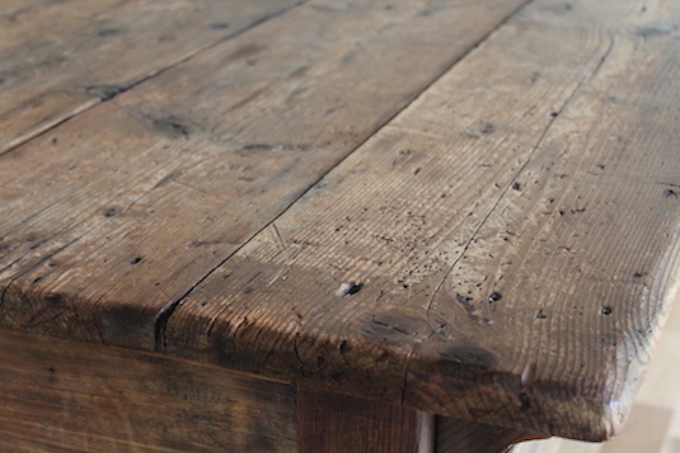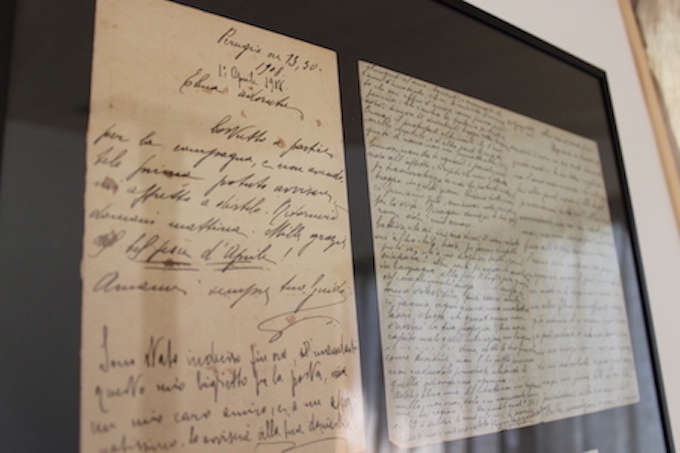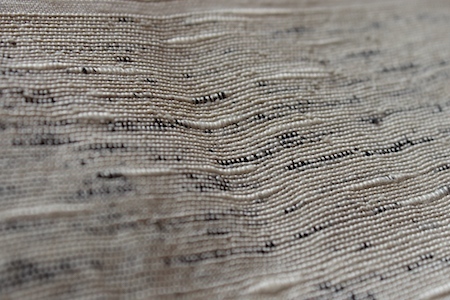There is a shop called “OLTREVINO” in Kamakura where you can buy Italian wines and foodstuffs, and there is also a place to eat inside.
I visited for the first time when I was strolling around Kamakura a few years ago.
Beyond the glass door of a fancy-looking shop, I could see something fascinating, such as a showcase on a counter, bottles of wine and seasoning, and my feet naturally stepped into the glass door.
Once I entered the shop, while being attracted to delicious looking stuff on both sides, my eyes were nailed to the big table at the back.
It was an antique wooden dining table, which was probably from Europe, had no single ornament, and looked rustic and soft.
I wondered how many times people had sat around this table for meals and what kind of conversation had been made…it had its own particular character with history seeped in which made me imagine those things.
The table was large enough for 6 people to sit comfortably and the table that could accommodate 8-10 people was good not only for my family but for inviting guests, as well as for doing work without any constraint. It was exactly what I was looking for in my future life.
It was love at first sight and I was exhilarated, but come to think of it, it was owned by the shop.
-no, but at least I want to find out where the owner found the table.
-that would be too nervy for my first time visit to the shop.
-no, no, but I want to ask.
After repeating the questions and answers to myself for a while, I finally made up my mind and asked the shopkeeper “Is this table…”
Then, unexpected answer came back, “This is a product on sale.”
So, the table that had been used in Lucca, Tuscany, Italy for over 100 years came to my hand easily, and it is now at the centre of my house.

It was Ms. Chie FURUSAWA who acted as a bridge to link the table that came all the way from Italy with my home.
She is an interior decorator who runs “OLTREVINO” with her husband, and trades Italian antiques and kitchen tools through online shop called “OVONQUE” too.
Before starting the business of the shop in Kamakura, she and her husband lived in Italy for 10 years and they still visit their house in Tuscany back and forth to deliver the breeze of Italy to us.
I am always looking forward to seeing the beautiful and charming stuff that are acknowledged by her.
One day, there was something that captured my heart again.
She introduced;
“A Letter from 1908
Tightly handwritten on simple paper.
It is a letter that writes about one’s thought, but it doesn’t look like a letter to me.
Its beauty is just like a picture. How wonderful it would look if you put it in a frame”
Once I listened to her say that, I couldn’t help getting it.
When I talked about this to my husband in happy excitement, he said “Oh, that’s good”, without showing much interest.
– Really, he doesn’t understand anything.
This is a letter written in Italy 107 years ago and it came all the way over to me beyond time and space.
The person who wrote it would have never imagined that it would reach a woman in Japan 107 years later.
It’s not like seeing a letter addressed by some prominent person in history to someone, like you see in museums.
The letter, written by unknown who lived in 1908, was passed from one person to another and finally reached me. How can you not appreciate such miracle…… though, I didn’t venture to say it aloud.
It was something that Ms. Furusawa obtained at a permanent flea market in Florence called “Ciompi” from a person who led her into the charm of Italian antiques.
She looked sorry and said,
“The letter seems to have been addressed by a man to a woman.
But I don’t know what’s written in detail, because the letters are small and wrote in script.”
-Yes, that’s fine.
I would be reluctant to read the private letter without permission too.
I just can’t help feeling something like writer’s breathing from the letters filled with thoughts.
I may feel that way even more because I cannot read the letter.
It feels like that the passion the person put in the letter is transmitted from the white paper that changed to brown over time, and the Italian words that are as if undecipherable code.

“Shifu” that I make is made by interweaving koyori* which is made of washi with poetry (words) written.
The text itself cannot be read from the cloth.
Instead, it is up to the person who touched the cloth how to read the words hidden in the texture of “Shifu.”
Because you cannot read them, it feels like there are words dwell within the cloth. That is my attempt.
“A Letter from 1908” and “Shifu”.
I am captivated and driven by the hidden soft passion (power) of each.

*Koyori: Twisted-paper string made of thinly ripped paper.
